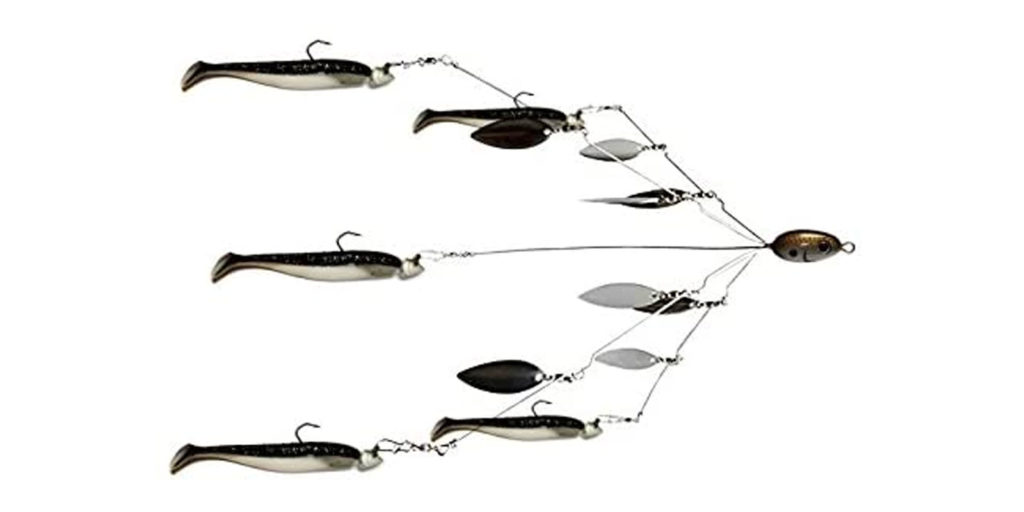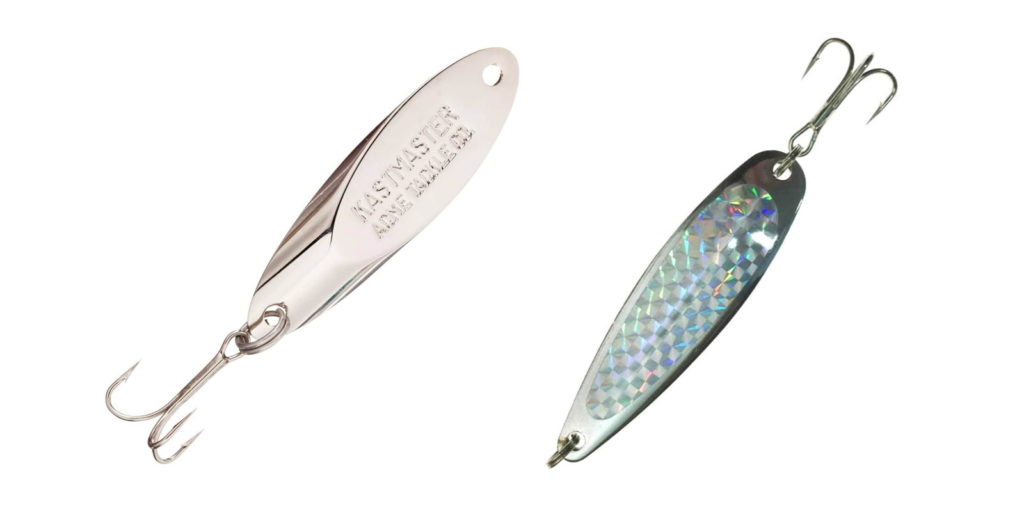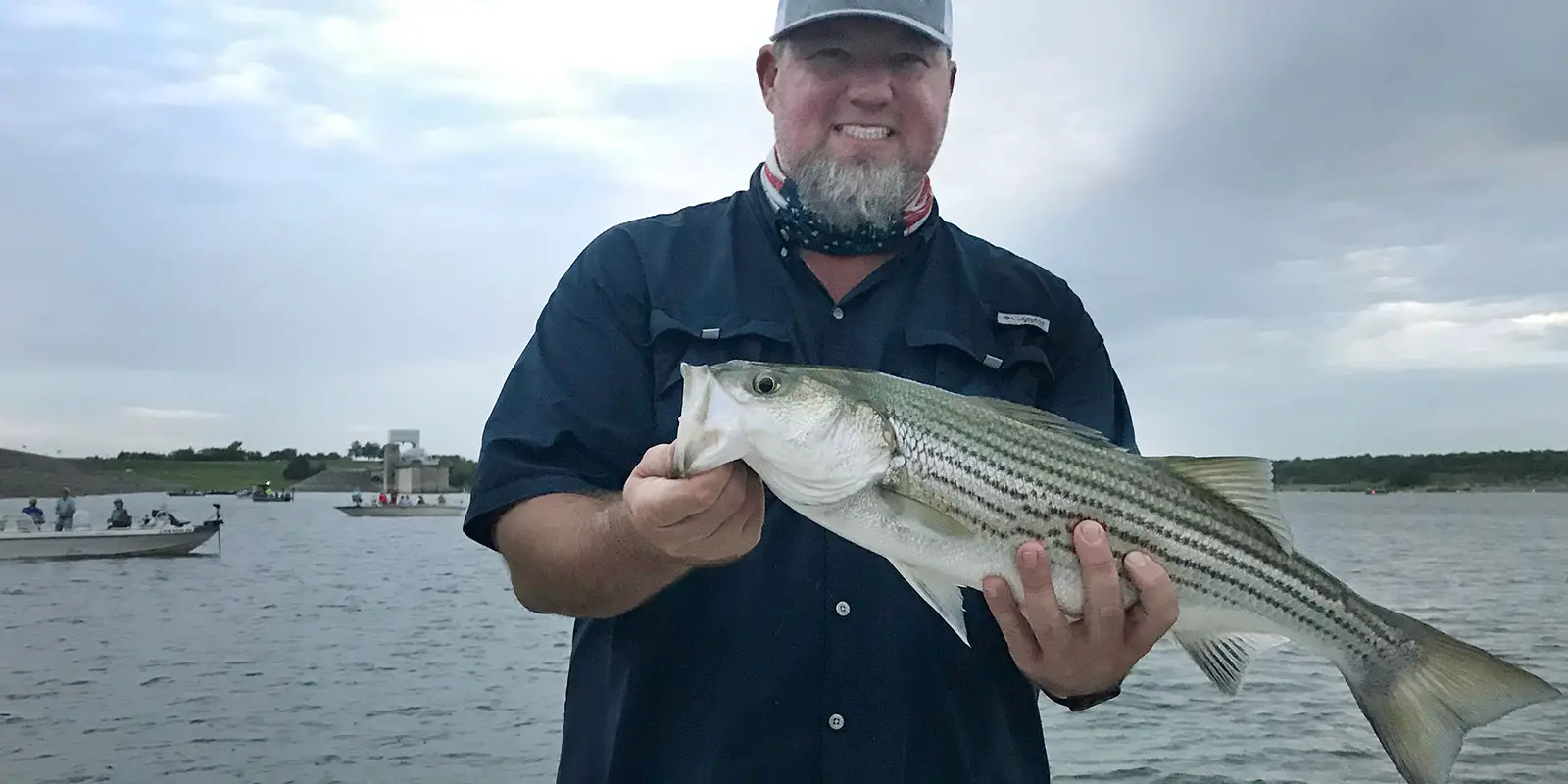Fishing for striped bass (commonly referred to as “striper”) is legendary for wide-open action and fun sized fish. But why? The answer is quite simple – striper fishing is not that hard to get into, so it does not take a lot of preparation to go on a fishing trip. Plus, striped bass are abundantly available all over the country, making it a regular species to target inland, on the east or west coast. Striper fishing is among the best ways to maximize your fun on the lake and enjoy one of the most peaceful and relaxing outdoor activities. However, as simple as catching a striper may sound, there are still some things you need to know in order to get the most out of your experience.
Today, we will take a look at three of the most effective striper lures, as well as talk about when each one of them should be used. Of course, just like any other fishing-related tips, these ones also require some additional research and planning. Hopefully, by the end of this post, you will have sufficient information to plan your next fishing trip, grab the necessary supplies, and load up your tackle box with the right gear.
Topwater Lures Are The Most Fun
Topwater fishing is an excellent way to catch stripers, but you need to know when the right time to use this method is. Stripers typically hit the topwater around sunrise so, ideally, you would want to arrive at your fishing spot at least an hour before sunrise, especially in the summer. Give yourself enough time to unload your gear, prepare your supplies, and to start setting up your equipment.
As soon as the sun starts showing up on the horizon, it is time to drop the lures and start the adventure. One of the types of topwater lures we recommend is the Berkley Choppo or Whopper Plopper. It comes in varying sizes, colors, and shapes. What is special about this particular type of lure is that it has a spinning fin on its back – this generates a lot of noise when you pull it through the topwater. As you can probably guess, all the ruckus attracts the stripers who will be all over the lure – all you need to do, is to pull them out successfully.
They both come in varying sizes and colors, and both work great on topwater striped bass fishing. You should be ready to try out a larger or smaller lure in case your original choice does not work out that well. Topwater is always best first thing in the morning, but sometimes you can sight fish for bait balls all day, looking for schools of striper chasing bait to the surface. If you do, throw one of these in the mix!

Use an Umbrella Rig
When the day starts to warm, topwater may no longer be a way to find striped bass. Stripers tend to go deeper when it gets warmer, and so you need a way to get down to their depth and find them. This is where the next type of bait comes in – an umbrella rig. These cool-looking lures can be purchased from any fishing store, and they often come equipped with shiny spoons and soft bodied swimbaits. However, there are also umbrella rigs that come without the extras, and you will need to purchase swimbaits and reflective ornaments separately. Some people prefer a full-equipped rig ready to fish, and others prefer to pick their own swimbaits.
But why are umbrella rigs so attractive to stripers? Thanks to the flexible bait and reflections, they look just like a school of fish. A well-crafted umbrella rig is certainly one of the best lures to use when looking for fishing at a semi-deep level. They are also excellent since you can customize them according to your needs and the type of fish you are going for.
Troll an umbrella rig slowly at depth to help zero in on some fish, or drop this into an active school and jig it slowly. Multiple hookups on one cast are not uncommon once you find a school of striper, so make sure your line and rod are heavy-duty with this setup!

Go Deeper with a Metal Slab
Striped bass can go pretty deep depending on the place you are fishing at – for example, Lake Texoma striper can often be found near the bottom of the lake in the river channel. If you are not having any success with the umbrella rig, then it is likely that you need to go deeper. This is where slabs come into play.
This is a very simple but effective type of bait. It is made of a piece of metal, which has been stamped out to have the shape of a small fish. Of course, it also comes in different sizes, so make sure to come prepared with several variants. You will probably need to swap them around to see which one works best. Usually, the body of the fish is polished or painted in reflective colors, and it also features reflective eyes to attract stripers in the deep waters. If you plan on using metal slabs, then make sure to jig them with good action when you get to depth – the rapid, fish-like movements will attract the striped bass.

Is this all you need to fish striped bass?
These are the three main lures that you can use in pretty much any situation when it comes to catching striper. But we also share the best ways to catch live bait, store it, and rig it up for striper. There are plenty of ways to catch live bait, but even simple methods are excellent – like using a nice egg weight held by a barrel swivel, finishing it off with some more line and a circle hook. Stay tuned to LakeHub for more striper fishing tips!







